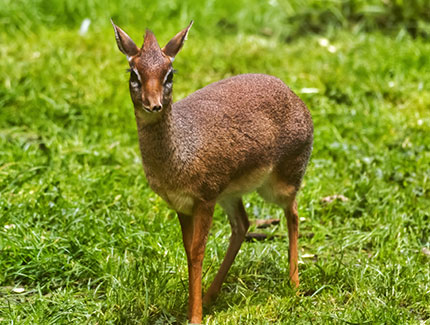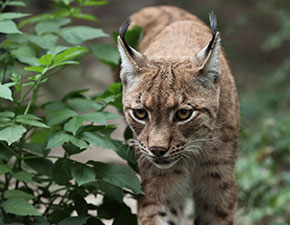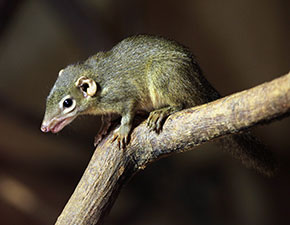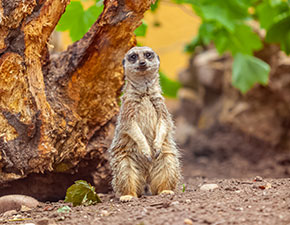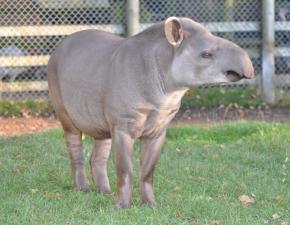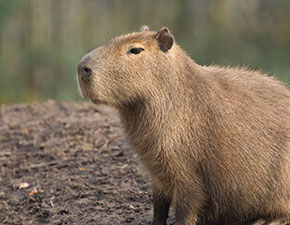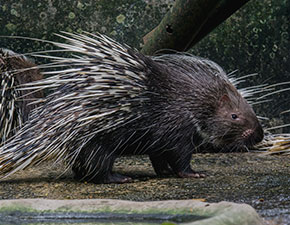
White Faced Saki Monkey
Pithecia pithecia
IUCN red list status:
Least Concern
For more informations, please visit iucnredlist.org

White-Faced Sakis live in South America including Brazil, Venezuela, French Guiana, Guyana and Suriname.

They eat mostly fruits, seeds, nuts and insects, but will prey on small mammals and birds too.

Often living alone or in small family groups, they’re found in the lower tree canopies of rainforests preferring areas with many fruit trees and easy access to water.

A single infant is born after 165-day gestation period. Infants stay attached to their mother until around 4-5 months. They can then live for 15-20 years.
White Faced Saki Monkey
About the White-Faced Saki
White-faced saki monkeys are given that name because the males have a white ring around their faces, while the females don't. The males have a black body while the females have a grizzled brown colour with slight white streaks on the side of the nose. They can adapt to both wet and dry conditions in a variety of altitudes with relative ease.
These monkeys spend most of the time in the trees, rarely going down to the ground. White-faced saki monkeys have long fingers and long nails, which make gripping branches and moving around in the trees easier. They prefer to move around in the trees on solid branches in the lower to middle-canopy levels.
Did you know?
They’ve earned their name ‘flying monkeys’ as they can leap up to nearly 10 meters between branches.
